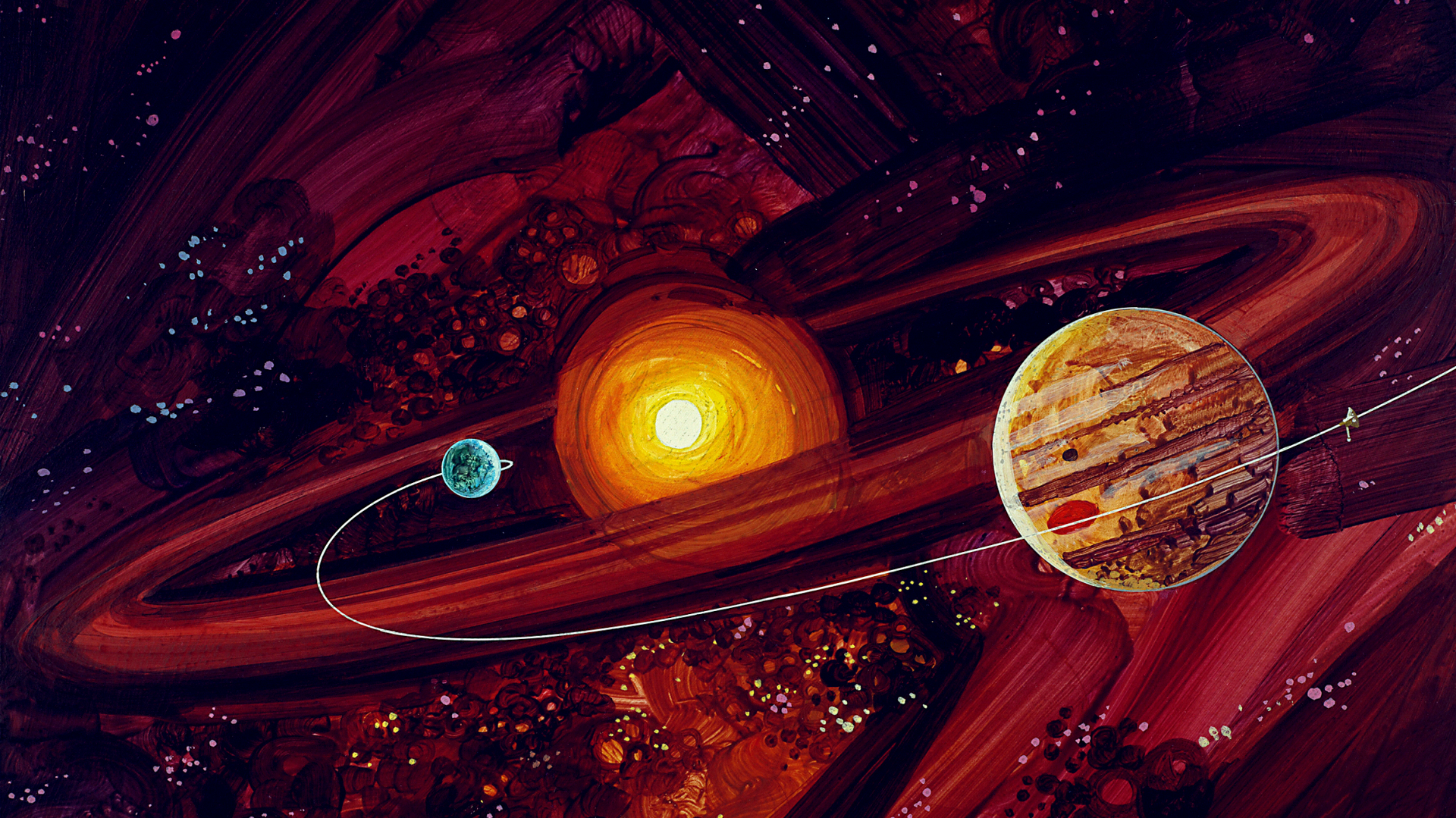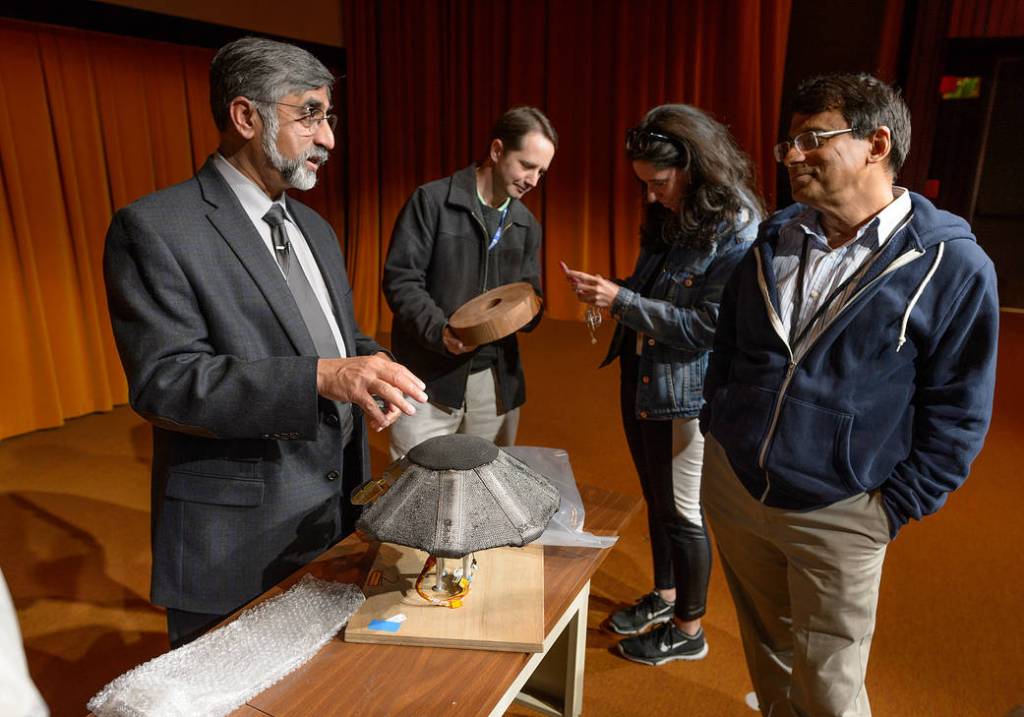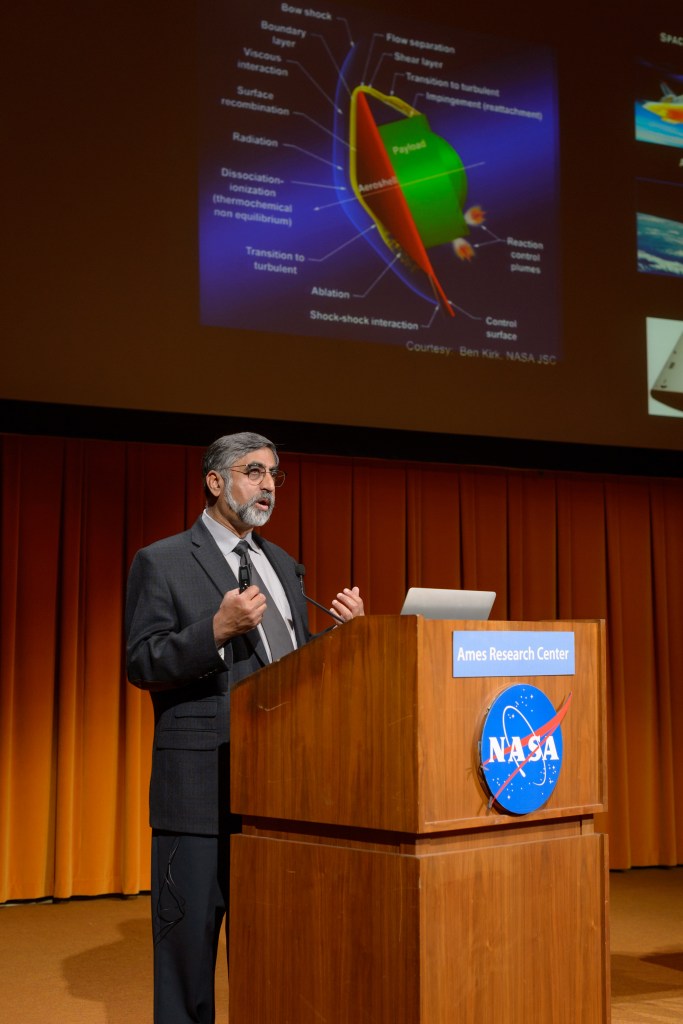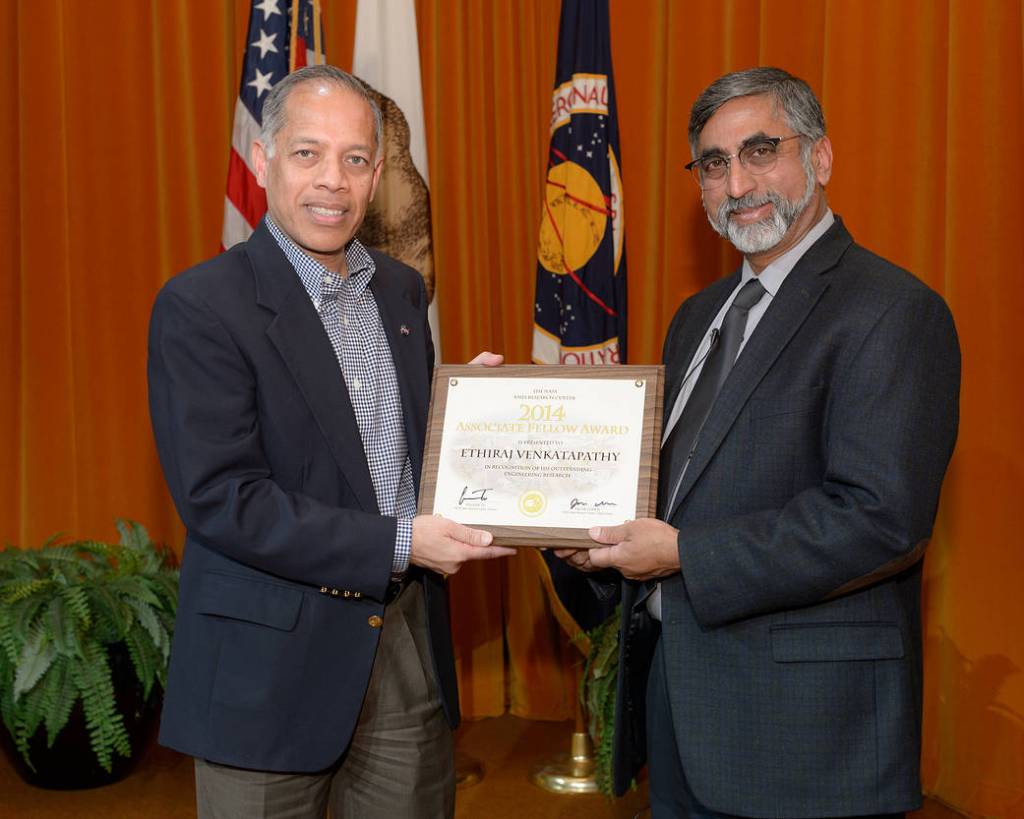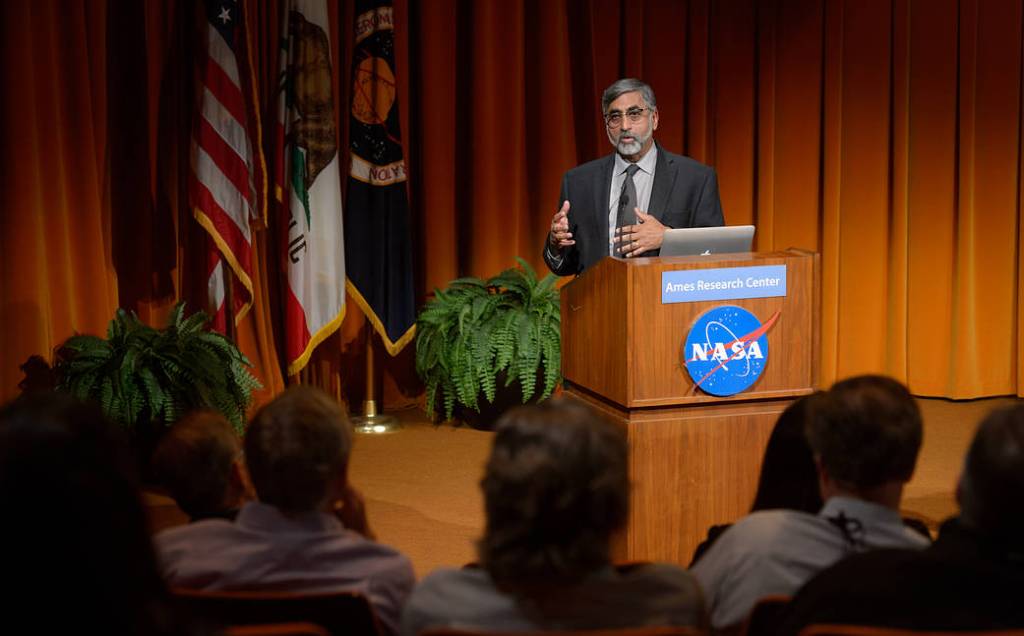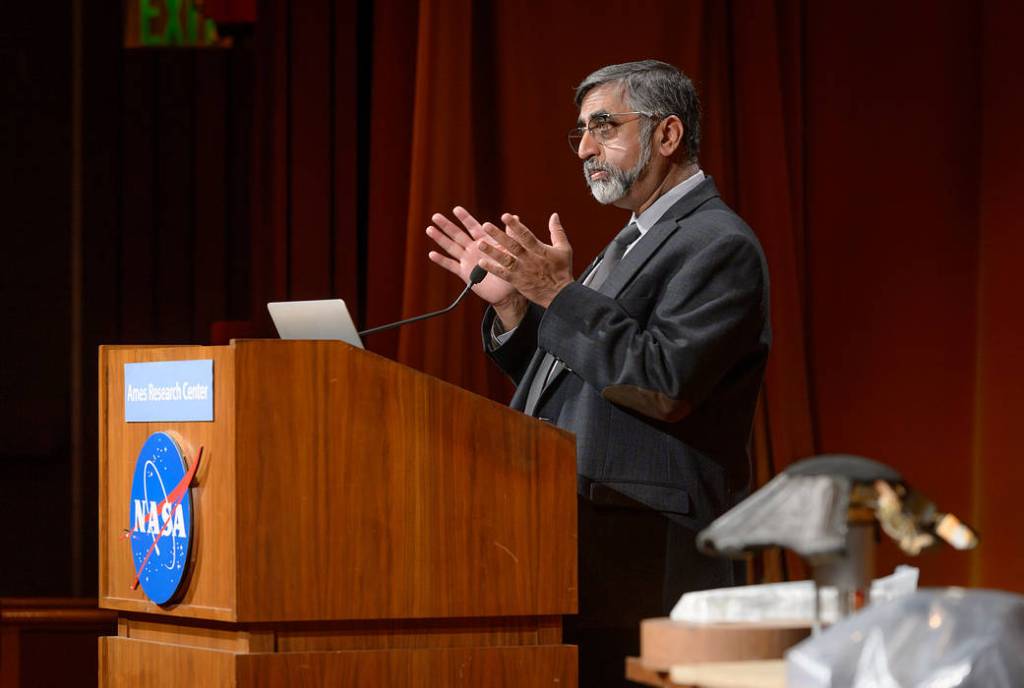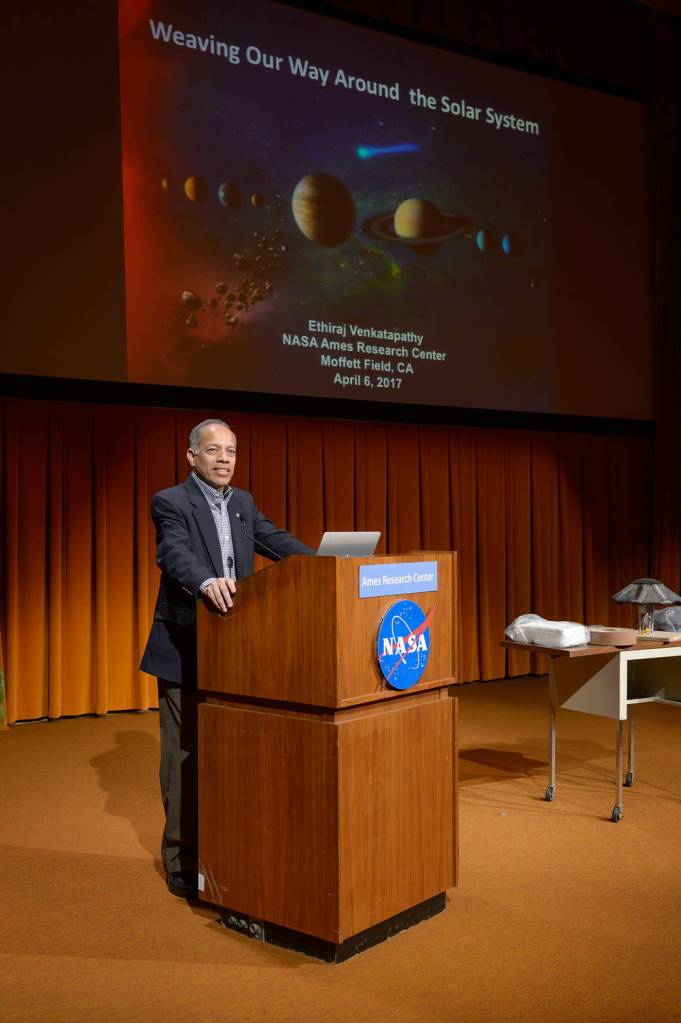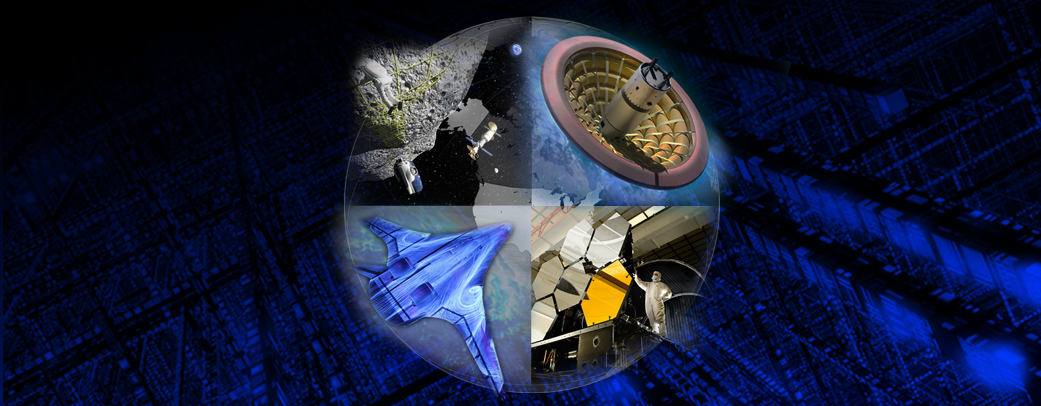Ames Associate Fellow Seminar by Dr. Ethiraj Venkatapathy
Exploration from afar is limited. Understanding requires external observations combined with insight of the inner workings. Entry, descent and landing (EDL) technologies are critical to explore the surfaces of other planetary bodies with atmospheres. NASA Ames is a leader in the development of technology to conduct atmospheric entry on different worlds, including re-entry to Earth. Dr. Venkatapathy will discuss emerging new technologies and computational methods that will facilitate the development of multifunctional EDL systems capable of withstanding extreme entry environments.
The Ames Associate Fellow is an honorary designation given to a NASA Ames employee in recognition of their scientific or engineering research excellence and contribution to NASA and our research Center. Dr. Ethiraj Venkatapathy was named the 2014 Ames Associate Fellow for his expertise and contributions in the area of thermal protection system (TPS) and materials
Abstract:
Entry, descent and landing (EDL) of human missions to Mars and returning them safely to Earth, in-situ robotic missions to inner and outer planets, and sample return missions from Mars, Enceladus and other Water Worlds are all exciting prospects with daunting challenges. Human missions to Mars require landing payloads of 10’s of metric tons, while decelerating from 15,000 mph in a matter of minutes. Return missions may exceed 30,000 mph and yet require the G load to be in the single digits during entry. Robotic missions will require withstanding heating due to decelerations from 25,000 to 80,000 mph at entry. Emerging new technologies based on weaving are allowing us to developing robust, efficient and cost effective solutions applicable to a wide variety of missions. This talk will highlight how modernized weaving is allowing us to develop new entry system concepts, manufacture multi-functional material and heatshields capable of withstanding extreme entry environments. New technology developments combined with advance computational methods and tools hold great promise to revolutionize space exploration making entry safer and more cost effective.
Biography:
Dr. Ethiraj Venkatapathy is currently the Chief Technologist for the Entry Systems and Technology Division at NASA Ames Research Center. Prior to joining NASA in 2003, Dr. Venkatapathy was the President and Director of Research for ELORET Corporation with over 100 employees specializing in computational engineering sciences, thermal protection and nano-technology development in support of NASA Missions. His affiliation with NASA Ames started with his Ph.D. thesis work as a student at Iowa State University (1977-1981) on the development and application of computational fluid dynamic solvers to predict hypersonic flow around the Shuttle Orbiter prior to the very first Space Shuttle flight. He has authored and co-authored over 150+ publications and has presented his work in national and international meetings and institutions. Currently he leads the game changing thermal protection system (TPS) materials development project funded by the Space Technology Mission Directorate as its Project Manager. He is also the Chief Technologist for both the adaptable, deployable entry placement technology (ADEPT) project and the Asteroid Threat Assessment Project (ATAP).
























